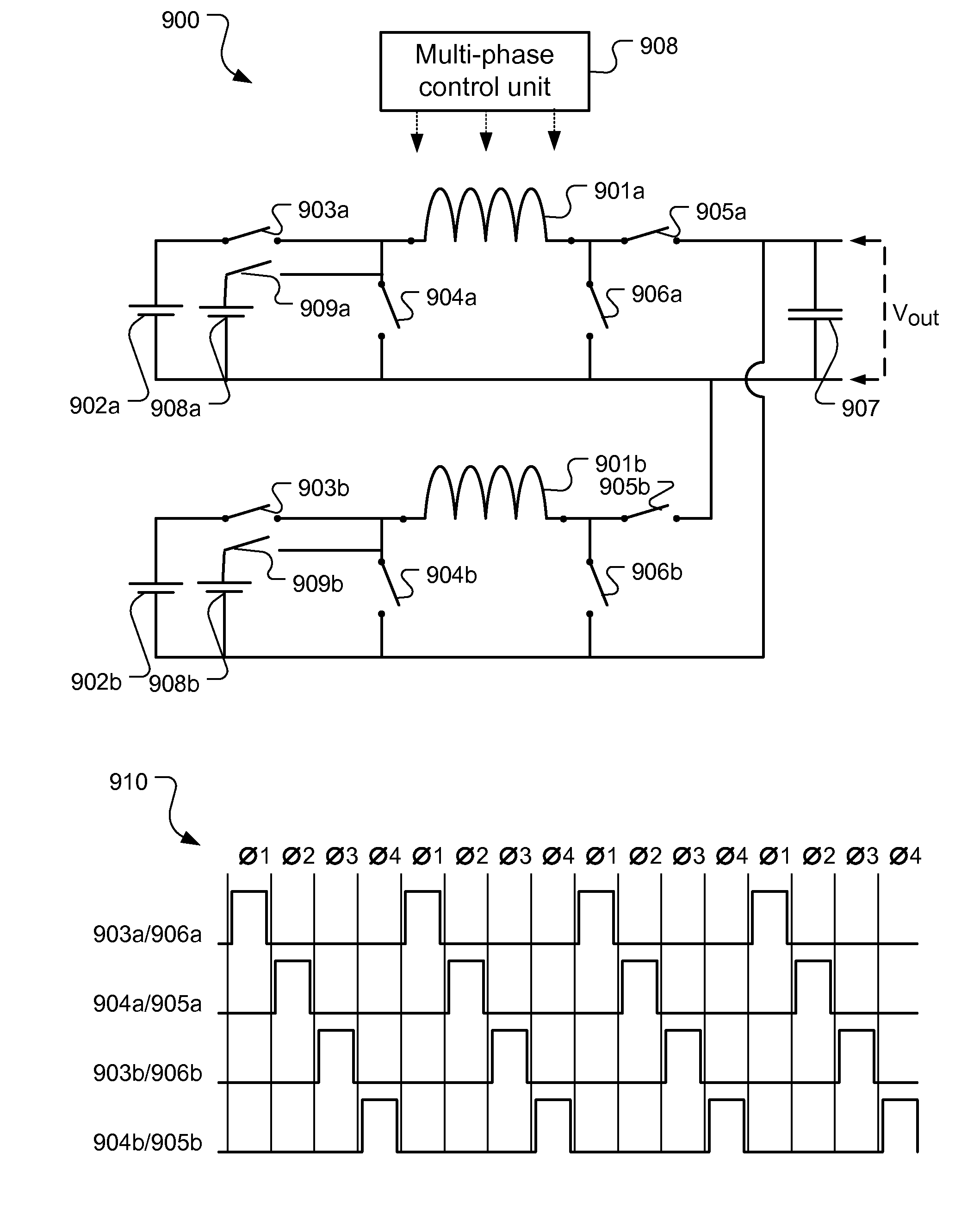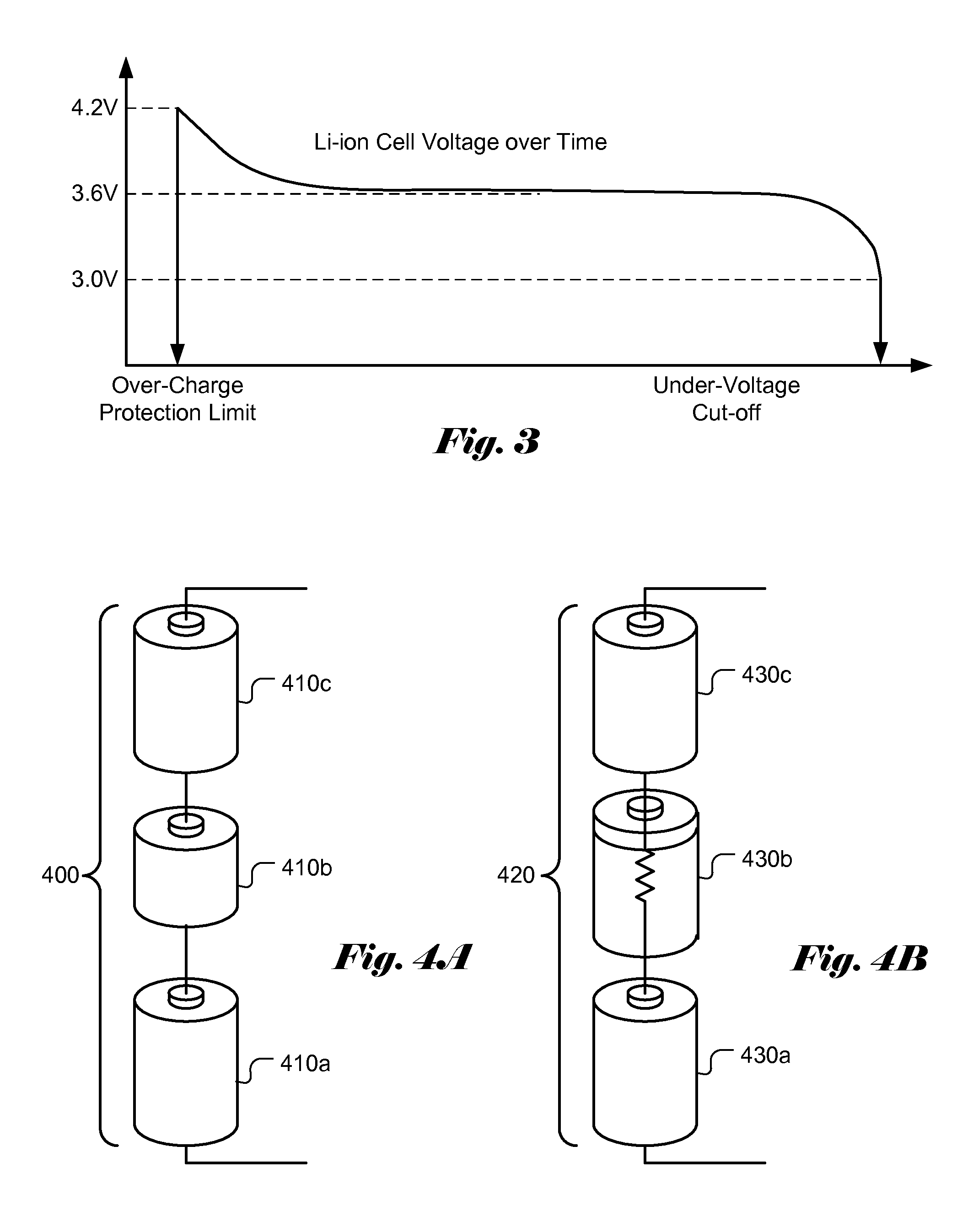Battery-cell converter systems
a converter system and battery technology, applied in the field of battery converter systems, can solve the problems of battery cell damage, battery cell rapid death, battery damage, etc., and achieve the effects of less charge, higher current output, and higher voltage outpu
- Summary
- Abstract
- Description
- Claims
- Application Information
AI Technical Summary
Benefits of technology
Problems solved by technology
Method used
Image
Examples
Embodiment Construction
[0039]As mentioned earlier, various types of cell mismatches exist among battery cells. When multiple battery cells with mismatches are used to create a battery pack, the weakest battery cell often determines the usability and life time of the battery pack. Therefore, the present invention eliminates the requirement of tightly matched cells within the battery pack while providing a regulated, managed output to the subsequent electrical loads. There are several main differences between a system incorporating an embodiment of the present invention and a convention system. One main difference is that there is no need to transfer charges from one battery cell to another in the system incorporating an embodiment of the present invention. While convention system stacks up battery cells to achieve a higher voltage output, a system incorporating an embodiment of the present invention achieve a higher voltage output by either using a DC / DC boost converter to boost the voltage of the energy s...
PUM
 Login to View More
Login to View More Abstract
Description
Claims
Application Information
 Login to View More
Login to View More - R&D
- Intellectual Property
- Life Sciences
- Materials
- Tech Scout
- Unparalleled Data Quality
- Higher Quality Content
- 60% Fewer Hallucinations
Browse by: Latest US Patents, China's latest patents, Technical Efficacy Thesaurus, Application Domain, Technology Topic, Popular Technical Reports.
© 2025 PatSnap. All rights reserved.Legal|Privacy policy|Modern Slavery Act Transparency Statement|Sitemap|About US| Contact US: help@patsnap.com



